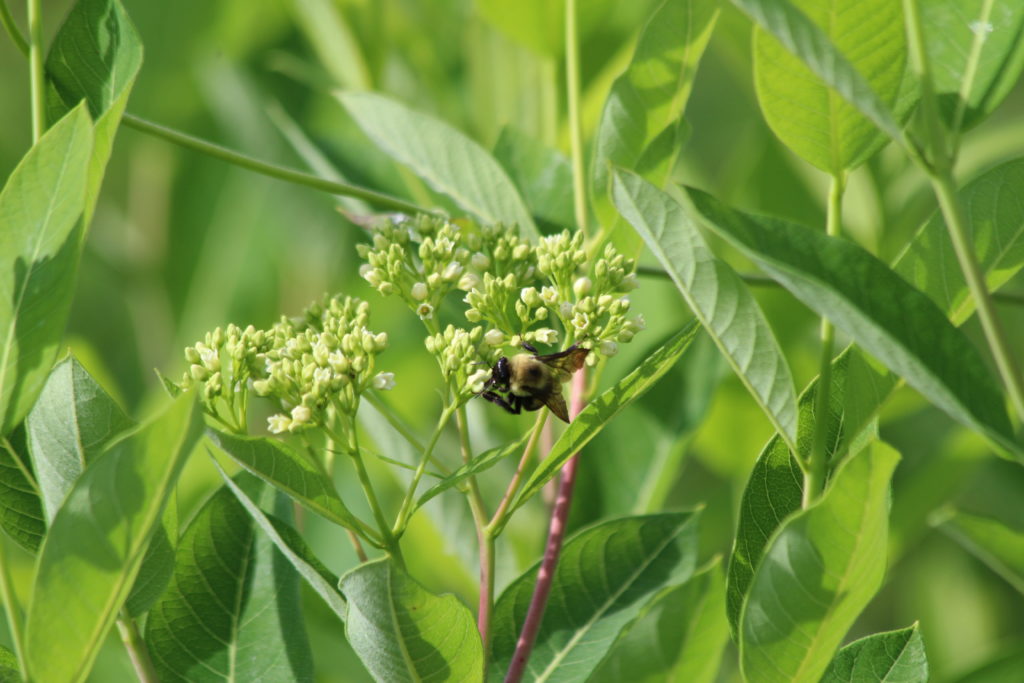
What’s in Bloom | Hemp Dogbane
June 18, 2020
Hemp Dogbane (Apocynum cannabinum)
Landowners often ask us about this plant as it is quite common and often found spreading throughout fields in our area of Virginia.
Known as hemp dogbane and other common names, this native perennial is found throughout all of the continental United States and most of Canada. It thrives in damp areas near stream beds but can also be found in drier conditions. Dogbane grows up to 6 feet tall (though most commonly found shorter than that) and has ovate to lanceololate leaves.
The small whiteish flowers emerge on branch tips in late spring through summer. The fruits are long, slender pods that carry the seeds. The plant is considered a weed by many because its strong root and rhizome system will spread new shoots over wide distances.
All parts of the dogbane (fresh or dried) are poisonous to humans, pets, and livestock. Though most animals will avoid this plant, domestic sheep are most likely to fall victim to the poison.
Historically, the fibers of the roots and stems were used by Native Americans to make rope, nets, baskets, and cloth. Other parts of the plant were occasionally used for medicinal purposes.
Benefits to Biodiversity | Dogbane provides a good source of native nectar for many species of bees, wasps, flies, butterflies and moths. A few species of beetle will also inhabit the plant.
Gardening & Landscaping | Despite its benefit to native pollinators, this plant is not typically recommended for gardens due to its often aggressive spreading habit. In fact, many landowners we meet find that it can become an issue taking over their fields and meadows. So choose location wisely if you want to plant dogbane or select other native plants to benefit pollinators.

brown-belted bumblebee 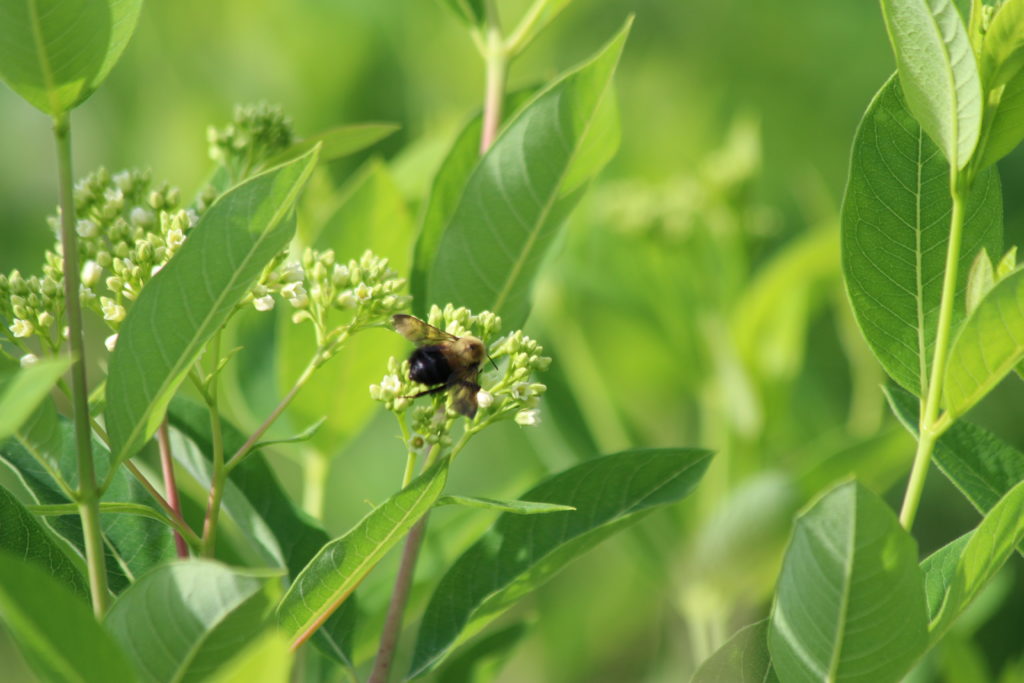
brown-belted bumblebee 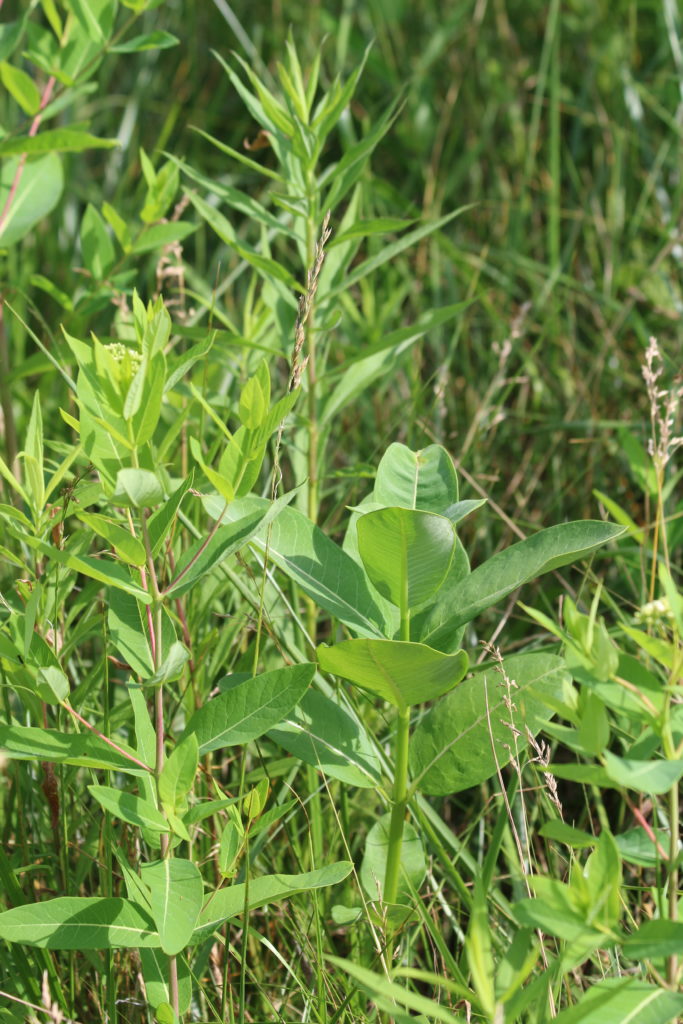
Dogbane (on left) not to be confused with common milkweed (on right). 
European honeybee 
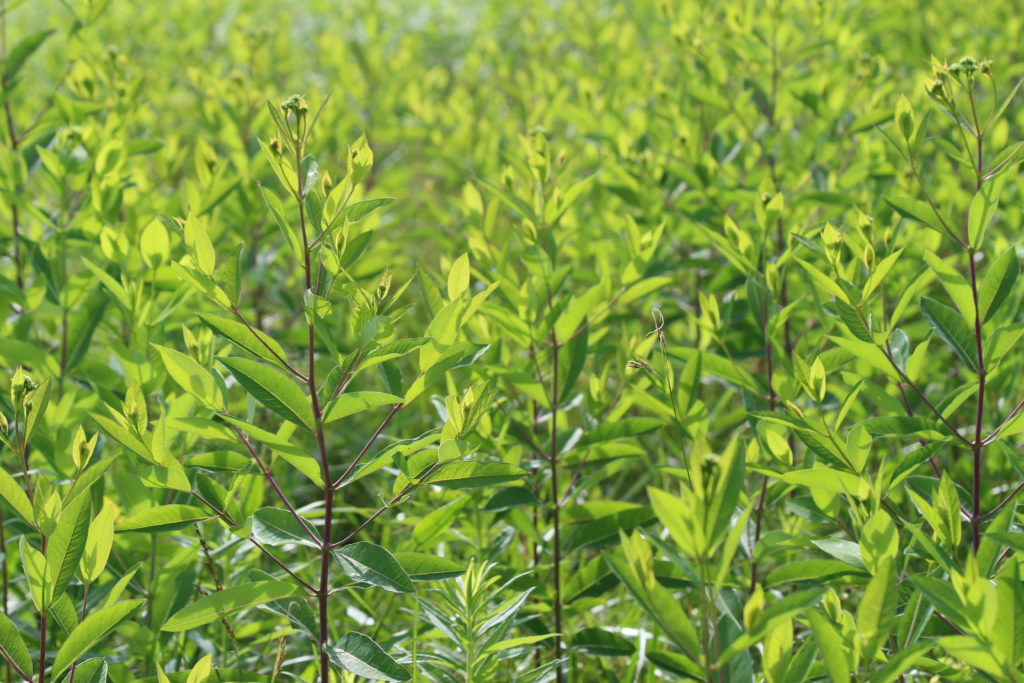


European honeybee 
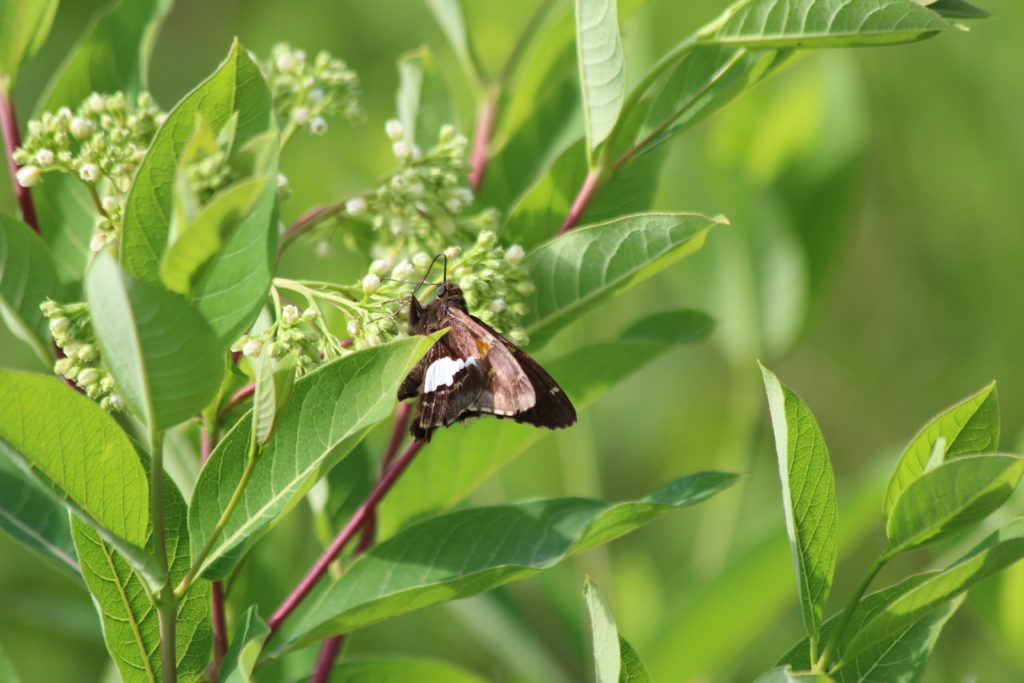
silver spotted skipper
Sources: USDA & Ladybird Johnson Wildflower Center
[…] in home gardens. It grows between 1 to 6 feet tall and is sometimes considered a weed because (like dogbane – see our previous post to learn about dogbane) it spreads through a root and rhizome system. Broken stems and leaves ooze a milky white sticky […]